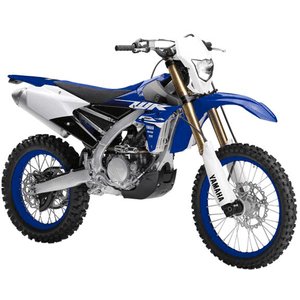Yamaha WR250F (2011-2014): A Timeless Enduro Companion
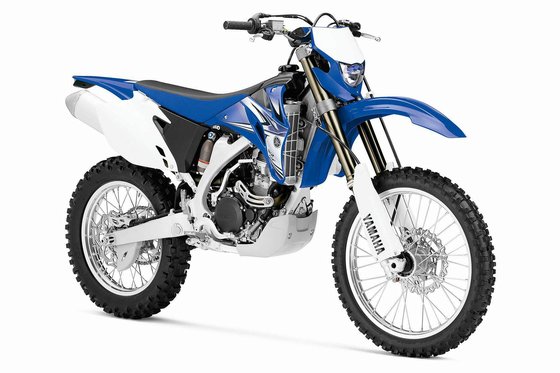
Introduction
The Yamaha WR250F, produced between 2011 and 2014, remains a benchmark in the 250cc enduro segment. Designed to tackle everything from tight forest trails to open desert stretches, this bike balances agility, reliability, and tunable performance in a way that still resonates with riders today. Having spent time aboard a well-maintained 2013 model, it’s clear why this generation of the WR250F continues to inspire loyalty among off-road enthusiasts. Let’s dive into what makes this machine a standout, even a decade after its release.
Engine Performance: Precision Meets Versatility
At the heart of the WR250F lies a 249cc, liquid-cooled, four-stroke engine with a DOHC five-valve head—a design derived from Yamaha’s motocross champion, the YZ250F. The titanium valves and lightweight reciprocating components ensure rapid throttle response, while the Keihin FCR-MX37 carburetor (a hallmark of this generation) delivers crisp fuel metering.
Power Delivery:
The engine is tuned for enduro riding, emphasizing low-to-mid-range torque over outright top-end power. This makes it exceptionally tractable in technical terrain. On rocky climbs or muddy ruts, the WR250F chugs along without stalling, but it’s no slouch when you wring the throttle. The top-end revs freely, offering a satisfying surge for open trails. Riders accustomed to fuel-injected bikes might notice a slight lag in throttle response, but the carburetor’s simplicity is a boon for field adjustments.
Electric Start & Reliability:
The push-button starter (backed by a kickstarter) is a game-changer in off-road scenarios. Even after a tip-over, the WR250F fires up eagerly. The engine’s reputation for bulletproof reliability—thanks to its dry-sump lubrication and robust internals—means it’s a trusted companion for multi-day adventures.
Handling and Suspension: Agile Yet Stable
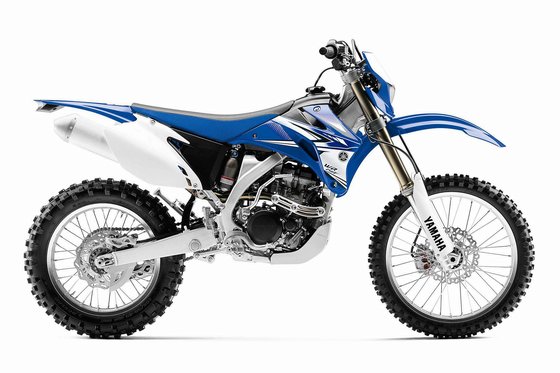
The WR250F’s aluminum bilateral beam frame strikes a perfect balance between rigidity and flex. Weighing in at 129 kg (284 lbs) wet, it feels nimble through switchbacks yet stable at speed.
Suspension Setup:
- Front: The 48mm fully adjustable KYB inverted forks offer 300 mm (11.8") of travel. Out of the box, the damping leans toward plushness, absorbing roots and rocks without deflecting. For aggressive riders, tightening the compression (20-click adjustability) transforms the front end into a precise tool for tackling whoops.
- Rear: The fully adjustable Monocross shock provides 305 mm (12.0") of travel. Its linkage-driven progressive rate shines in G-outs and maintains traction on exits.
On the Trail:
In tight singletrack, the WR250F flicks between trees with minimal effort. The 21-inch front wheel rolls over obstacles confidently, while the 18-inch rear (shod with a 100/100-18 tire) hooks up predictably. At higher speeds, the chassis remains composed, though the soft stock suspension can feel overwhelmed in repeated big hits—a fixable quirk with aftermarket springs or valving.
Ergonomics and Comfort: Built for Endurance
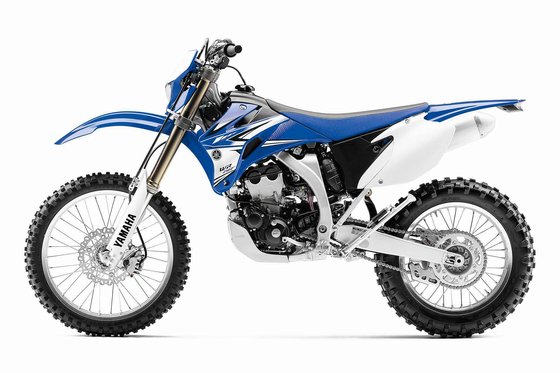
The WR250F’s ergonomics prioritize functionality. The 980 mm (38.6") seat height is tall but manageable, and the narrow midsection lets riders shift weight effortlessly.
Rider Triangle:
- Handlebars: The ProTaper handlebar (with a 10mm adjustable mount) offers a neutral riding position.
- Footpegs: Wide 55mm stainless steel pegs provide ample grip, even in wet conditions.
- Fuel Tank: The 8-liter (2.1-gallon) tank is compact, keeping the center of gravity low. Range is limited—plan for 100-120 km (60-75 miles) between refuels.
Compliance:
The seat, while firmer than a dual-sport’s, is forgiving enough for multi-hour rides. The slim bodywork and YZ-inspired plastics make it easy to grip the bike with your knees, reducing arm pump on long descents.
Competition: How Does the WR250F Stack Up?
The WR250F faced stiff competition during its production years. Here’s how it compares to rivals:
- Honda CRF250X:
- Pros: Softer suspension for beginners, smoother power delivery.
- Cons: Heavier (134 kg / 295 lbs), less aggressive engine character.
-
WR Edge: Lighter, more tunable suspension, and superior low-end grunt.
-
KTM 250 EXC-F:
- Pros: Fuel injection, six-speed transmission, sharper handling.
- Cons: Higher maintenance costs, less forgiving suspension.
-
WR Edge: Lower cost of ownership, legendary reliability.
-
Kawasaki KLX250S:
- Pros: Street-legal versatility, lower seat height.
- Cons: Underpowered, softer chassis.
- WR Edge: True off-road focus with race-ready components.
Upgrade Potential:
To close the gap with modern bikes, consider MOTOPARTS.store upgrades like a high-flow air filter, aftermarket exhaust, or suspension revalving. These mods unlock hidden performance while retaining the WR’s rugged charm.
Maintenance: Keeping the WR250F in Prime Condition
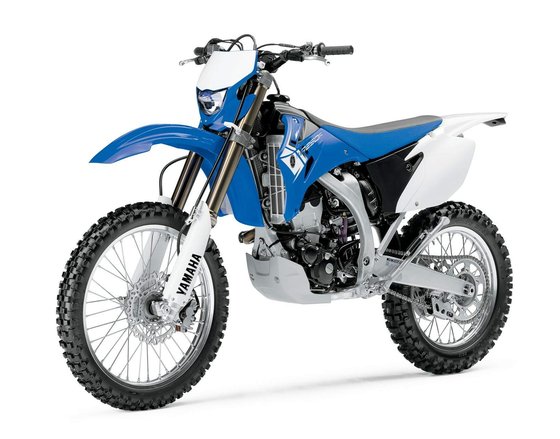
The WR250F’s maintenance needs are straightforward but demand consistency:
- Valve Adjustments:
- Intake: 0.10–0.15 mm (0.004–0.006")
- Exhaust: 0.17–0.22 mm (0.007–0.009")
-
Check every 40 hours of hard riding.
-
Oil Changes:
-
Use SAE 10W-50 oil (1.2L with filter). Replace every 15–20 hours.
-
Air Filter:
-
Clean the dual-stage foam filter after every ride. Apply waterproof grease to the seal for dust protection.
-
Chain Care:
-
The #520 O-ring chain lasts longer with regular lubrication. Adjust slack to 50–60 mm (2.0–2.4").
-
Cooling System:
- Use ethylene glycol-based coolant and inspect hoses for cracks annually.
Pro Tips:
- Swap the stock carburetor’s pilot jet for leaner conditions.
- Upgrade to a DID VT2 chain for reduced maintenance.
- Install a skid plate from MOTOPARTS.store to protect the engine on rocky trails.
Conclusion: A Legacy of Capability
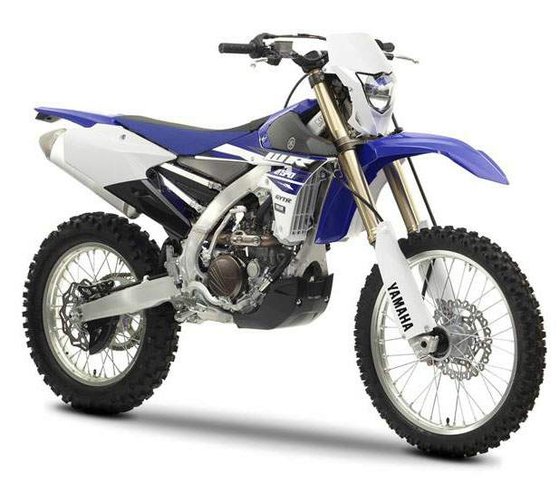
The Yamaha WR250F (2011–2014) is a testament to thoughtful engineering. It’s a bike that rewards skill, forgives mistakes, and thrives in the harshest environments. While newer models boast fuel injection and six-speed gearboxes, this generation’s simplicity and durability make it a favorite among purists. Whether you’re exploring backcountry trails or prepping for a enduro race, the WR250F remains a worthy steed—one that’s only enhanced by the right aftermarket touches.
At MOTOPARTS.store, we’re here to help you tailor this classic to your needs. From performance upgrades to essential maintenance kits, we’ve got everything to keep your WR250F conquering trails for years to come.




Specifications sheet
| Engine | |
|---|---|
| Stroke: | Four-stroke |
| Starter: | Electric / Kick |
| Fuel system: | Keihin FCR-MX37 flat-slide carburetor with throttle position sensor |
| Lubrication: | Dry sump |
| Displacement: | 249 ccm |
| Configuration: | Single |
| Cooling system: | Liquid cooled |
| Compression ratio: | 12.5:1 |
| Number of cylinders: | 1 |
| Valves per cylinder: | 5 |
| Dimensions | |
|---|---|
| Wheelbase: | 1475 mm (58.1 in) |
| Dry weight: | 106 |
| Wet weight: | 129 |
| Seat height: | 980 mm (38.6 in) |
| Overall width: | 826 mm (32.5 in) |
| Overall height: | 1275 mm (50.2 in) |
| Overall length: | 2315 mm (91.1 in) |
| Ground clearance: | 335 mm (13.2 in) |
| Fuel tank capacity: | 8 L (2.1 US gal) |
| Drivetrain | |
|---|---|
| Chain type: | #520 Heavy-duty O-ring |
| Final drive: | chain |
| Chain length: | 114 |
| Transmission: | 5-speed |
| Rear sprocket: | 50 |
| Front sprocket: | 13 |
| Maintainance | |
|---|---|
| Rear tire: | 100/100-18 |
| Engine oil: | 10W50 |
| Front tire: | 80/100-21 |
| Idle speed: | 1850 ± 100 rpm |
| Brake fluid: | DOT 4 |
| Spark plugs: | NGK CR9E or NGK CR9EIX |
| Spark plug gap: | 0.8 |
| Coolant capacity: | 1.0 |
| Forks oil capacity: | 1.3 |
| Engine oil capacity: | 1.2 |
| Engine oil change interval: | As per Yamaha maintenance schedule (typically every 1000-2000 km for off-road use) |
| Valve clearance (intake, cold): | 0.10–0.15 mm |
| Valve clearance check interval: | Recommended every 10,000 km or annually |
| Carburetor air screw adjustment: | 1.75 turns out |
| Valve clearance (exhaust, cold): | 0.17–0.22 mm |
| Recommended tire pressure (rear): | 1.0 bar (14.5 psi) |
| Recommended tire pressure (front): | 1.0 bar (14.5 psi) |
| Additional Features | |
|---|---|
| Footpegs: | 55mm wide stainless steel |
| Lighting: | 35W headlight with adjustable beam, LED taillight |
| Instrumentation: | Digital enduro computer with speedometer/odometer/tripmeter/clock |
| Frame protection: | Heavy-duty resin engine guard |
| Fuel compatibility: | E10 ethanol-approved |
| Emissions compliance: | California Green Sticker approved |
| Chassis and Suspension | |
|---|---|
| Rake: | 27.0° |
| Frame: | Aluminium Bilateral Beam |
| Trail: | 115 mm (4.5 in) |
| Rear brakes: | Single 240mm wave-style disc, 1-piston Nissin caliper |
| Front brakes: | Single 250mm wave-style disc, 2-piston Nissin caliper |
| Rear suspension: | Link-type Monocross shock with adjustable high/low-speed compression and rebound damping |
| Front suspension: | 48mm fully adjustable inverted Kayaba cartridge fork |
| Rear wheel travel: | 305 mm (12.0 in) |
| Front wheel travel: | 300 mm (11.8 in) |



